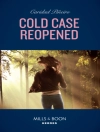In ‘Martin Hewitt – Complete Series: 25 Mysteries in One Volume (Illustrated), ‘ Arthur Morrison expertly weaves a tapestry of crime narratives that delve into the intricacies of human psychology and societal norms of the late 19th century. The collection features the astute detective Martin Hewitt, a character crafted with depth and nuance, whose investigations unfold through sharp, concise prose and vivid imagery. Morrison’s literary style resonates with the meticulous attention of the Victorian era, while simultaneously shaping the genre of detective fiction with rich descriptions and evocative dialogues, ensuring a compelling read for any mystery enthusiast. Arthur Morrison, a prominent figure in the literary scene of his time, was deeply influenced by his personal experiences in London’s East End and a keen interest in the intricacies of criminal behavior. His exposure to the underbelly of society not only informed his writing but also led him to portray detective work with a realistic lens. Morrison’s commitment to creating relatable characters and gripping plots situates him as a pioneering voice alongside contemporaries like Arthur Conan Doyle, ultimately contributing to the evolution of the detective genre. This complete series is a must-read for fans of classic detective stories and those intrigued by the psychological undercurrents of crime. Morrison’s timeless tales invite readers into a world of intellectual challenge and layered intrigue, making it an essential addition to any literary collection, illuminating the artistry behind early detective fiction.
เกี่ยวกับผู้แต่ง
Arthur Morrison (1863–1945) was an influential English author and journalist, renowned for his contributions to the detective fiction genre and his realistic portrayals of London’s working-class life. Morrison’s literary career is most prominently marked by his creation of the character Martin Hewitt, whose escapades are chronicled in the ‘Martin Hewitt – Complete Series: 25 Mysteries in One Volume (Illustrated)’. Hewitt’s character was designed as a contrast to Sherlock Holmes, possessing a less flamboyant and more methodical approach to solving crimes, which appealed to a readership eager for relatable detective figures. Morrison was adept at vividly depicting the Victorian and Edwardian eras, a trait that won him acclaim for both his mystery series and his social novels. Beyond the realm of detective fiction, Morrison is also remembered for his realistic narratives of the London slums, especially ‘A Child of the Jago’ (1896), which exposed the dire conditions in the Victorian East End. His literary style interweaves authentic dialogue with descriptive precision, steering clear of melodrama to maintain an objective tone. This literary realism not only captivates readers but also serves as a document of the social conditions of the time. Morrison’s works remain a significant part of the British literary landscape and continue to be studied for their contributions to the genre and sociocultural insights.












